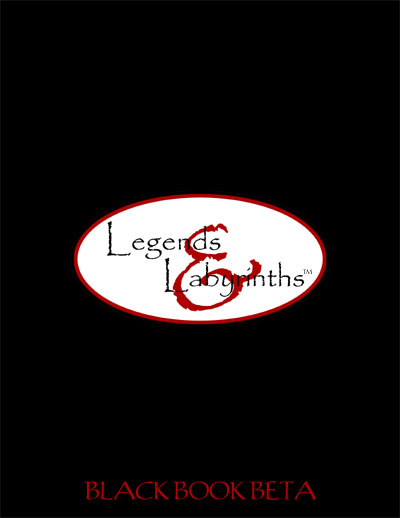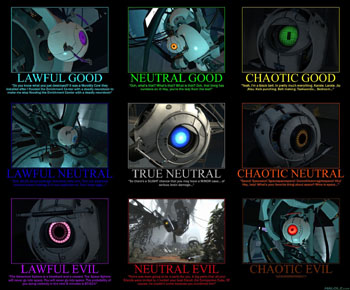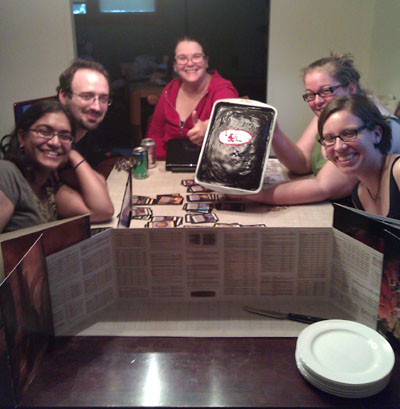An open table is not the only way to play a roleplaying game, but over the past year and a half I’ve become increasingly convinced of two things:
First, the move away from the open table as the default mode of gameplay in RPGs has played a huge role in RPGs becoming an increasingly niche hobby: Without an open table, RPGs are more difficult to GM (reducing the total number of tables) and it’s more difficult to invite new players to try out the game (reducing the influx of new players). The latter problem is further exacerbated by the fact that GMs running closed tables are able to support fewer total players in their campaigns, which further depresses the number of players that can be supported with the current population of GMs. (And since most GMs start as players, the reduction in the total number of players means fewer people becoming GMs… Rinse. Wash. Repeat.)
Second, if you love playing RPGs then you owe it to yourself to have an open table in your back pocket: When playing an RPG is as easy as playing a board game or a card game, you’ll be able to play a lot more. Plus, in my experience, your open table (and the large network of players you’ll be able to recruit using it) will give your closed tables a lot more stability and endurance (because it provides a recruiting pool for your closed games).
And if you’re going to have an open table in your back pocket, then you need to breathe life into your wandering monsters.
PROCEDURAL CONTENT GENERATION
As I discussed in “(Re-)Running the Megadungeon“, one of the most important elements in running an open table is minimizing the GM’s prep work by maximizing the utility of your core content: If you need to spend 2-3 hours (or more) prepping fresh content for every session, then the game isn’t as easily accessible. Instead, you want to be able to refresh the same material so that it can be used over and over again without becoming repetitive or boring.
And in an effective open table, you’ll employ these techniques at every level of the game: You’ll use wandering monster tables during actual play to simulate an active, living complex; controlling the pace of the adventure and extend its useful life cycle. You’ll restock sections of your megadungeon between sessions so that players can revisit familiar terrain with new faces. You’ll intermittently restock lairs and ruins in your hexcrawl to keep them an active part of play.
The secret to all this, of course, is procedural content generation. And the great thing about it is that you’re not just “recycling material” (although that’s the most utilitarian aspect at work here). You’re specifically recycling material by keeping the world in motion: Not only does your campaign become more sustainable, it also becomes deeper and more interesting.
The term “procedural content generation” comes from the computer gaming industry: There it refers to the programmatic creation of content. For example, instead of having a human designer create the floorplans for every building in the game, the designers can instead program certain “rules” for how building floorplans are designed and then allow the program to spontaneously generate that content.
I’m using the term here in pretty much the same sense: Rather than hand-picking the contents of a treasure horde, for example, you can generate the treasure by rolling on random tables. Random encounters are another obvious example. I find these kinds of “stocking systems” most useful, but there are lots of examples: The Avernus Remix includes a procedural method for generating simple building floorplans. “Factions in the Dungeon” describes how to generate strife between your NPCs using B2 Keep on the Borderlands as a case study. And so forth.
(The tools that are most useful will depend on both your personal style and the particular scenario you’re working with.)
In computer games there are two major problems with using procedurally generated content: First, it can create logical inconsistencies. Some of these logic problems can actually render a game unplayable. (For example, if the location of a key is randomly generated behind a door that you can only open if you have the key.)
Second, it can be boring and bland. There’s a reason why we don’t use randomized madlibs to write novels, after all. Procedurally generated content is often shallow and can easily become repetitive (particularly once the player begins to recognize the underlying procedures being used).
MAKING IT WORK
In the computer games industry, overcoming these problems usually involves drastically increasing the complexity of the methods being used to perform the procedural generation. This, obviously, isn’t a viable solution for tabletop gaming (where we generally don’t have computers to do the heavy-lifting when it comes to complex or multi-step calculations).
Fortunately, it doesn’t matter.
The great thing about procedural content generation in tabletop play is that it doesn’t need to actually generate something creative or interesting: It just needs to provide the improv seed for the GM to riff off of.
To take a simple example: If you roll up 3d6 orcs and you simply default to “3d6 orcs attack”, then your game is going to become boring and bland. Roll up 3d6 orcs and decide that:
- They’re Orcus-worshippers who have all flayed the skin off their right hands, leaving a motile skeleton that’s capable of delivering an energy drain attack 1/day.
- They’re religious zealots who have been converted to the worship of Apollo and preach about the “glorious scourge of sunlight” to fellow travelers.
- 3 of the orcs are being attacked and brutalized by the others; they’ll beg the PCs for help.
- They’re mercenaries who are looking for a good paycheck. Are the PCs hiring?
And you’ve got the fodder for a good encounter.
CONTEXTUALIZING
Simply saying “Be Creative!” is all well and good, but it doesn’t give a lot of actual guidance. Recently, however, I’ve been dissecting exactly what it is I’m doing during that moment of creative genesis in which I interpret a piece of procedurally generated content and I’ve come to the conclusion that it all boils down to one core concept:
Contextualize the content.
By which I mean that you simply need to either (a) place the encounter within the context of the game world or (b) create a context that will become part of the game world.
Let’s take the specific example of a wandering monster. When you roll up a wandering monster, ask yourself four questions:
(1) What makes them unique?
(2) Where are they coming from?
(3) What are they doing?
(4) What’s their reaction to the PCs?
I’m not asking you to write an essay or anything. In fact, the answers don’t even need to be complete sentences. But asking those questions will get your creative juices flowing; and providing some quick answers will let you make the resulting encounter specific and interesting (instead of generic and boring).
Of course, if you’re still stumped you could always take a peek at What Are Those Wandering Monsters Up To? and What Are the Goblins Up To?, which are both designed to give the creative centers of your brain a little more prodding in order to break you out of the rut of “the monster is there to fight the PCs”.
(And, of course, OD&D includes a reaction table for NPCs so you can randomly generate the answer to #4, too.)
Which, of course, brings us back to the title of this piece: You shouldn’t look at a wandering monster table as a cast list of automatons. If you breathe a little life into them, they’ll pay back your creativity a hundredfold at the game table.
















